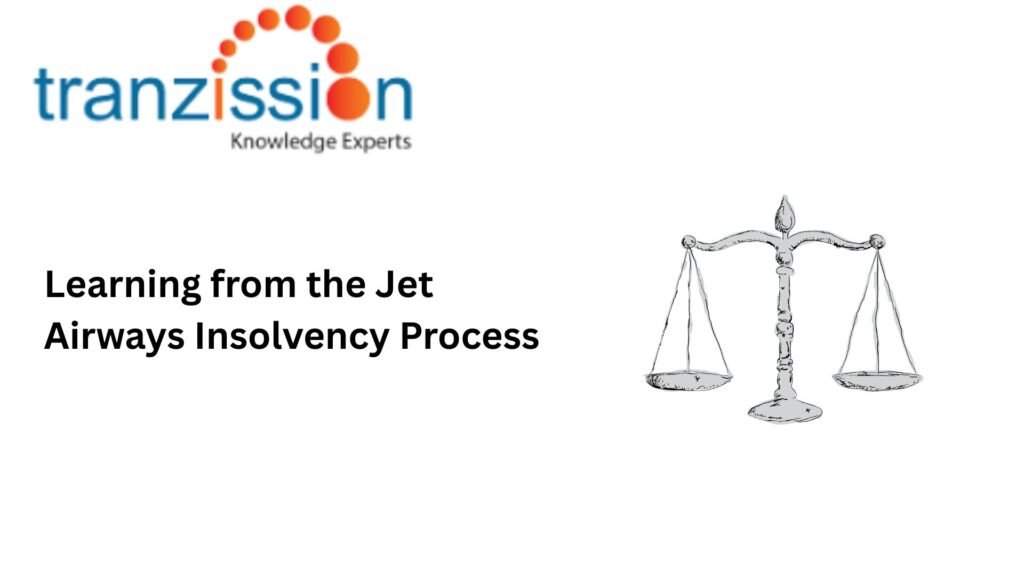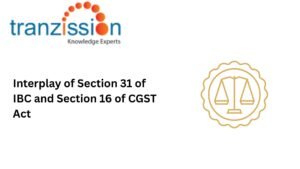
Learning from the Jet Airways Insolvency Process

Table of Contents
The prolonged Jet Airways Insolvency Process, spanning several years, exposed delays in implementing resolution plans and the flaws within the Insolvency and Bankruptcy Code, 2016 (“the IBC”), in addition to the complexities of resolving large-scale corporate insolvencies, particularly in the aviation sector. The case exposed challenges in areas like cross-border asset management, adherence to resolution timelines, and the need for reforms to ensure timely and efficient resolution of insolvency cases.
Rise & Fall of Jet Airways
Jet Airways was established in 1992 by Naresh Goyal and grew to become India’s largest private airline, expanding to over 70 destinations worldwide. The airline was known for its full-service model and competitive pricing, initially capturing a significant market share. At its peak, Jet Airways was a dominant force in the Indian aviation industry. It began experiencing financial difficulties in 2009 due to rising fuel costs, intense competition from low-cost carriers, like IndiGo, and operational inefficiencies. The airline’s debt levels ballooned significantly over the years, such as the Air Sahara acquisition, rising fuel costs, and currency depreciation, with net worth turning negative in 2012. Despite various attempts to restructure and secure funding, the airline was unable to overcome its financial challenges. In April 2019, Jet Airways Insolvency Process temporarily suspended all operations due to a lack of funds and an inability to secure further financing. The airline entered insolvency proceedings, and despite several resolution plans, none were successfully implemented.
Read more :Digital Personal Data Protection Act 2023 and the IBC 2016
IBC-CIRP Timeline & Key Players
This case spanned several years, involving the role of the State Bank of India (SBI), the Jalan-Kalrock Consortium (JKC), and various tribunals:
- June 20, 2019: The corporate insolvency resolution process (CIRP) was initiated by the SBI against Jet airways under section 7 of the IBC.
- 2020: JKC, the SRA, submits a resolution plan.
- October 17, 2020: the Committee of Creditors approves the resolution plan with a 99.22% majority.
- Jun 22, 2021: The National Company Law Tribunal (NCLT) approves JKC’s resolution plan.
- 2023: JKC faces challenges in meeting financial obligations, raising doubts about the plan’s feasibility.
- November 7, 2024: The Supreme Court orders the liquidation of Jet Airways Insolvency Process due to the JKCs failure to adhere to the resolution plan, specifically by not using a Performance Bank Guarantee (PBG) for the first tranche payment as stipulated.
Legal & Operational Hurdles
- The JKC faced repeated delays in fulfilling financial obligations outlined in the resolution plan, including the initial payment of Rs. 350 crore and payment of CIRP costs.
- The SRA’s failure to comply with the Supreme Court’s orders regarding payments and the implementation timeline further complicated the process.
- Securing regulatory approvals, particularly the Airways Operators Certificate (AOC), proved difficult and contributed to the overall delays.
- Jet Airway’s international operations added complexity to the insolvency proceedings, requiring coordination across different legal jurisdictions.
- The Supreme Court ruled that JKC’s attempt to use the PBG for the first tranche payment was a violation of the resolution plan of the court’s previous order. The court emphasized that the PGB was intended as a means of payment for the first tranche.
Cross‑Border Insolvency & Asset Issues
- Jet Airways assets in the Netherlands were subject to separate insolvency proceedings, creating complexities in coordinating actions between Indian and Dutch authorities.
- The case underscored the challenges of conflicting jurisdictional claims, where multiple countries might assert authority over the same assets, leading to legal disputes and delays.
- The cross-border nature of the businesses operations, especially its leading arrangements, complicated the process of recovering assets for creditors.
- The involvement of international lessors, suppliers, and financial institutions exposed the limitations of the IBC in effectively managing and coordinating claims from various stakeholders.
- The absence of a comprehensive cross-border insolvency framework in India hindered the smooth resolution of the case.
Key Lessons for Policy & Practice
The Jet Airways Insolvency Process case provides valuable lessons for policy makers and stakeholders in the insolvency process:
- Delays in the CIRP can significantly erode value and undermine the purpose of the IBC, making time bound resolution a critical factor.
- It underscores the need for a mechanism to ensure successful bidders to comply with approved resolution plans, including clear provisions for performance guarantees and consequences for non-compliance.
- Clear guidelines and a structured framework for plan amendments, while maintaining the Committee of Creditors (CoC) commercial wisdom, can minimize disputes and facilitate smoother resolution.
- The aviation industry faces unique challenges, and restructuring plans need to account for these pressures. Sector-specific strategies can help businesses navigate financial distress effectively.
- This case also demonstrates a successful approach to managing cases with international implications, emphasizing coordination between jurisdictions.
Conclusion : Jet Airways Insolvency Process
The Jet Airways Insolvency Process case provides a complex picture of the IBC, highlighting both its potential and its shortcomings. While the IBC aimed to streamline the resolution of stressed assets, this case revealed vulnerabilities in the process, especially regarding delays, monitoring compliance with approved plans, and ensuring timely and effective resolution.





